This post contains affiliate links
We drove out to Glen Ellen on a spring day. The kind where you can feel how hard the sun is attempting to cast a blanket of warmth and it very nearly does but step into one shadow and you’re chilled. Glen Ellen sits about eight miles north of Sonoma (roughly 1.5 hours north if you’re coming from San Francisco) and is so much of an adorable dot on the map you might miss it if you’re not paying attention.
We went to visit Jack London State Historic Park which is a short mile and a half to the west of town just past the Benziger Family Winery–ah, wine country. The park includes the home his wife (Charmian) built after he died, London’s gravesite, the ruins of his 15,000 square foot home that burned down shortly before its completion, the Londons’ cottage, and a handful of other historic farm type buildings. If you want to cover the whole historic park and/or dive into any of the 29 miles of backcountry trails plan to spend a whole day here (or at least 4-5 hours).
A kiosk at the entrance requires a $10 vehicle entry fee (for a typical vehicle, fees vary for large passenger vehicles) or entrance is free if you have a California State Parks pass. From here, you’ll turn left or right. Start by going left to the parking lot of the House of Happy Walls Museum that doubles as a visitors center. There are flush toilets adjacent to the parking lot and a few picnic tables as well.
EVERYTHING YOU NEED TO SEE AT THE JACK LONDON STATE HISTORIC PARK
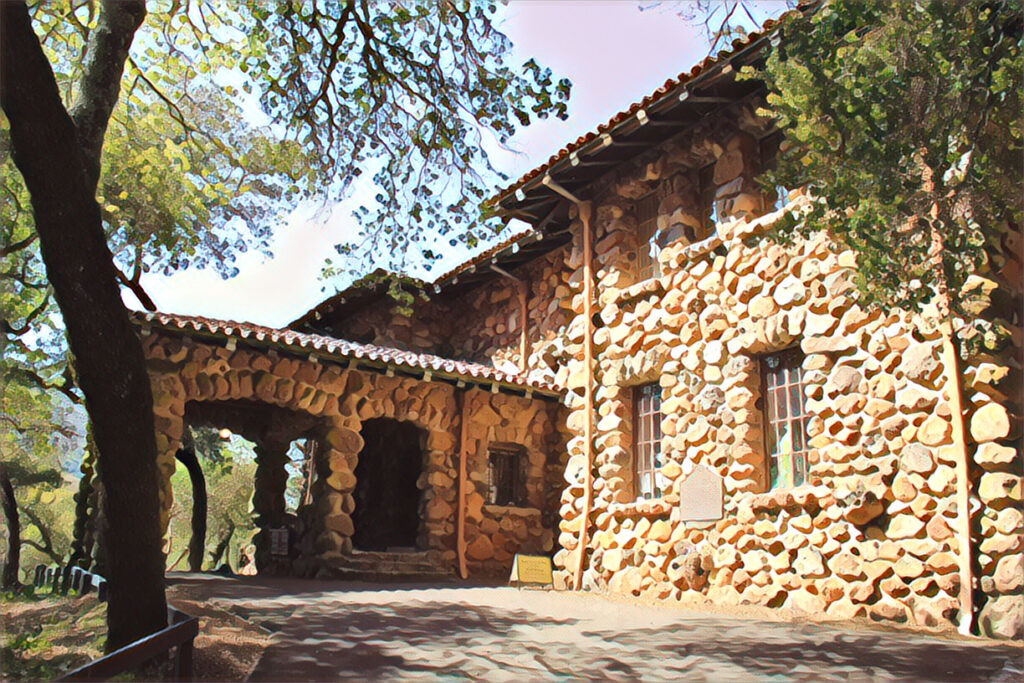
House of Happy Walls Museum
This is the best place to start as it serves as the visitors center. After London died in 1916, his wife, Charmian, and his stepsister, Eliza Shepard, had this home built with the knowledge that it would eventually turn into a museum honoring London’s life. Architect Harry P. Merritt built it in the same Arts and Crafts style that was reflected in Wolf House but this home is roughly a third of the size. Charmian lived here from 1935-1952 and relied on her bold style to design the interior.
You can still observe her adventurous spirit as you walk around the museum through items such as jade colored sinks, deep red paint, and a closet full of clothing that reflects a love for different fabrics and worldly garments. Additionally, there are exhibits on Jack’s and Charmian’s lives together and the experiences they had around the globe. There are a couple kid friendly exhibits and a small gift/bookshop on the first floor by the entrance.
Jack London’s Gravesite and the Wolf House Ruins
From the House of Happy Walls take the trail toward Wolf House. The trail is 0.6 miles down to the old ruins and London’s gravesite is a short detour at about the 0.5 mile mark. The trail itself is half paved/half gravel and dirt and moderately flat (watch out for poison oak). It’s a relatively easy hike but in the hot summer months it could be more strenuous. The park does offer a free golf cart ride down to the Wolf House ruins for those who need it.
The trail diverts to London’s gravesite and it’s roughly a tenth of a mile from the main trail to get there. You’ll walk past a historical information board about London’s gravesite as well as those of the Greenlaw children. The Greenlaws were a family of Irish and Scottish immigrants who lived on the land before Jack London. Sadly, two of their children passed away during this time and were buried on the hillside. After a type of root rot ruined their grapevines the Greenlaws abandoned their farm and moved on, leaving the two children’s graves behind.
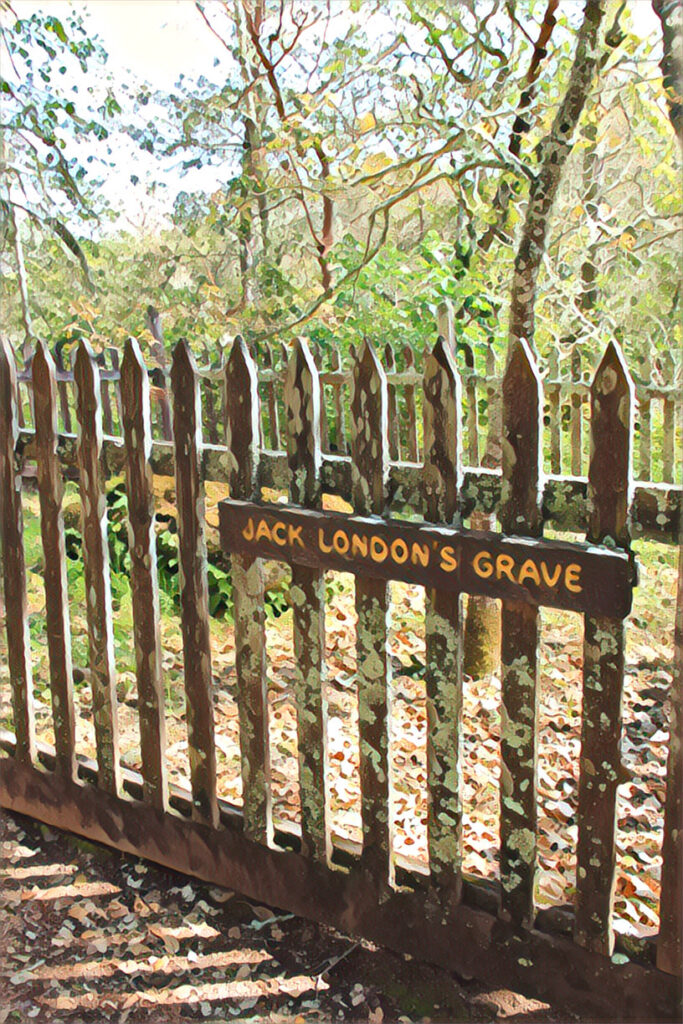
London requested that his ashes be placed on this hillside and that a large red boulder from the Wolf House (or the “Big House” as he called it) ruins be used to mark his grave. London’s health began rapidly deteriorating towards the end of 1916 and on November 22nd he passed away from what was officially noted as kidney failure. Charmian’s ashes were added under the same stone and placed next to London after her death in 1955.
To continue on to Wolf House head back to the main trail and walk for another tenth of a mile. You’ll come around a slight bend and descend into a small grove of redwood trees where the ruins of the 15,000 square foot sits. London hired prominent Arts and Crafts architect, Albert L. Farr to design his home.
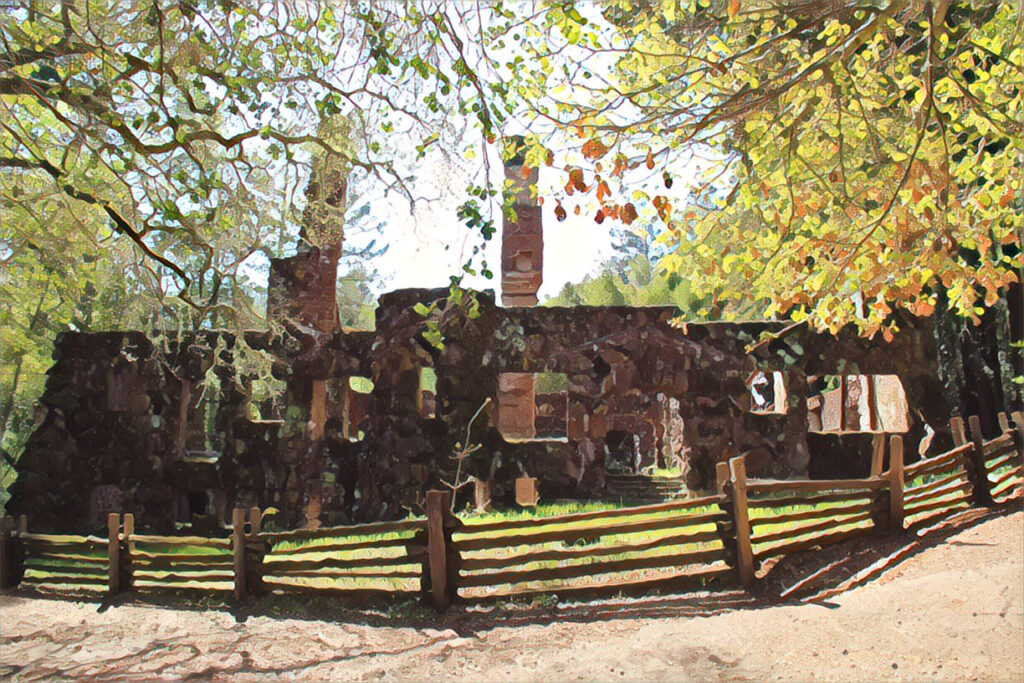
Farr was known for many homes in the Russian Hill, Pacific Heights, and Sea Cliff neighborhoods of San Francisco. London was so concerned with the catastrophic damage caused by the 1906 earthquake and subsequent fire that he and Farr went to great lengths to have something built that was durable and “fireproof.” On the evening of August 22, 1913–just a few months before it was set for completion–Wolf House caught fire due to spontaneous combustion of linseed oil soaked rags leftover by construction workers.
While there’s no actual access to the ruins due to structural hazards, the trail winds itself all the way around giving access to views from all sides. At one point there is a set of stairs to climb that leads to an overlook platform. There are also picnic tables and a water fountain adjacent to the ruins (but no restroom). If you’re able, catch a guided tour of Wolf House, given by the park’s staff.
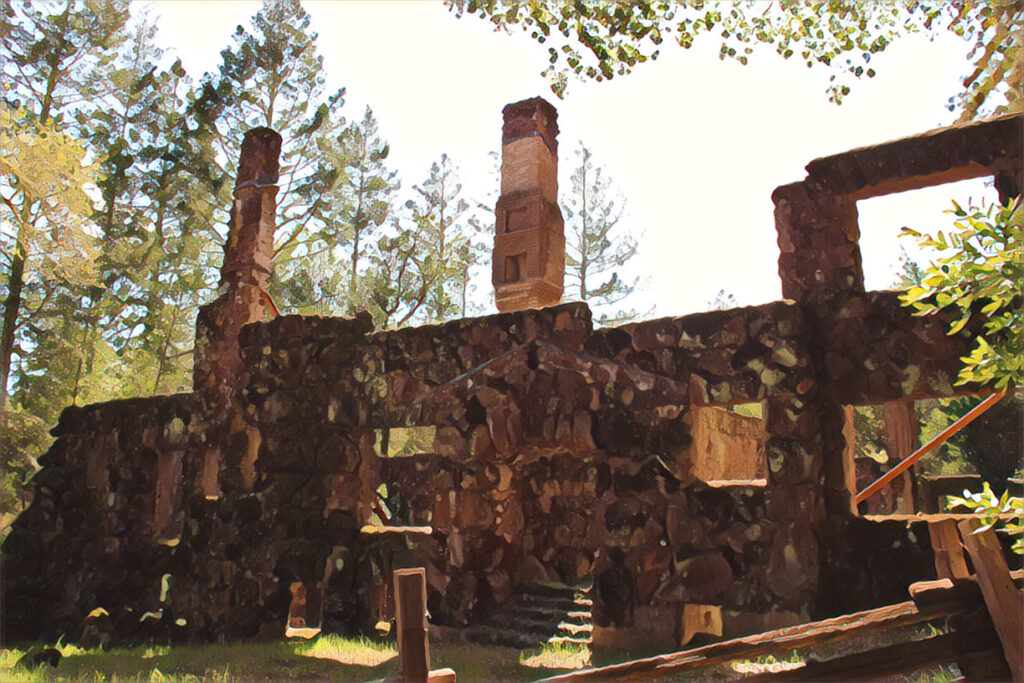
Once you’ve covered the sights on “this side” of the park, you can either drive or walk over to the parking lot that leads to the cottage and surrounding vineyards and farm buildings.
WHAT TO EXPLORE AT THE BEAUTY RANCH PORTION OF JACK LONDON STATE HISTORIC PARK
The farm part of the property or “Beauty Ranch”, as London called it, was really the heartbeat of life when London was alive. Between 1905 and 1913, London purchased 1400 acres of land on the slopes of Sonoma Mountain with money earned from his novels. At one point, he employed 50 ranch hands. London was well ahead of his time with organic farming techniques and had to make up for decades of bad farming practices.
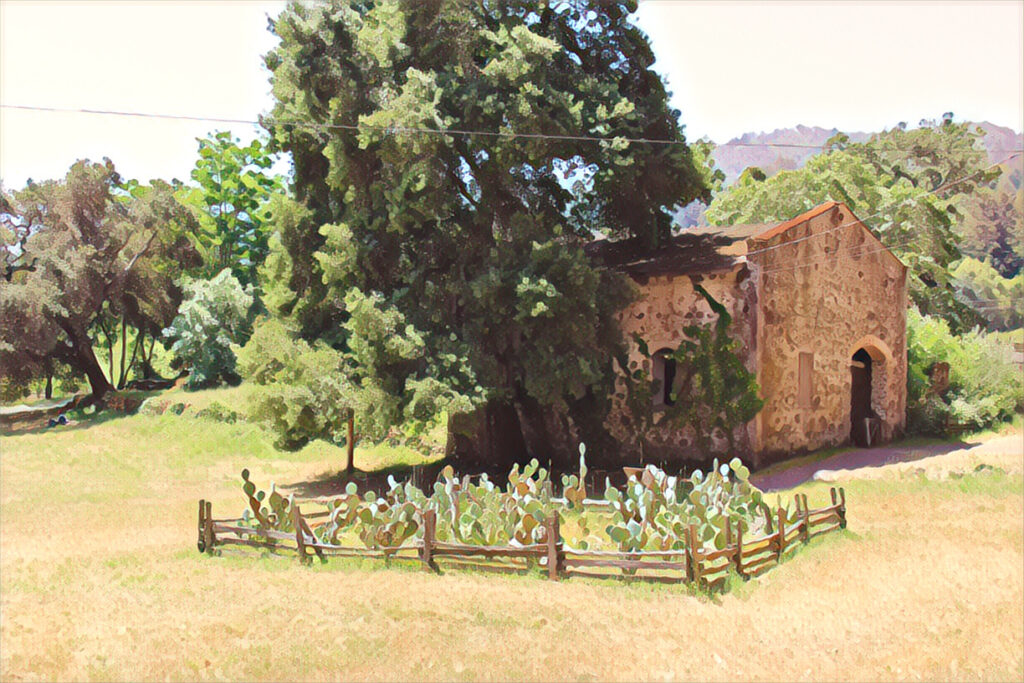
He experimented with growing spineless cactus for cattle feed, planted 65,000 eucalyptus trees, worked with green manure as a natural fertilizer, practiced rotating crops, composted, and built the first concrete block silos in the state of California. Farming was a passion and he revolutionized the way it was done in the early 20th century.
From the parking follow the dirt path towards the farm buildings. There are picnic tables and a porta-potty available adjacent to the parking lot. On your way to the cottage, you’ll pass by the Stallion barn, the Manure Pit, and the Distillery.
It’s worth a stop to pop into the Distillery building which was leftover from the days this property was part of a winery. During London’s time (as it is set up now) it was used to hold large farm equipment.
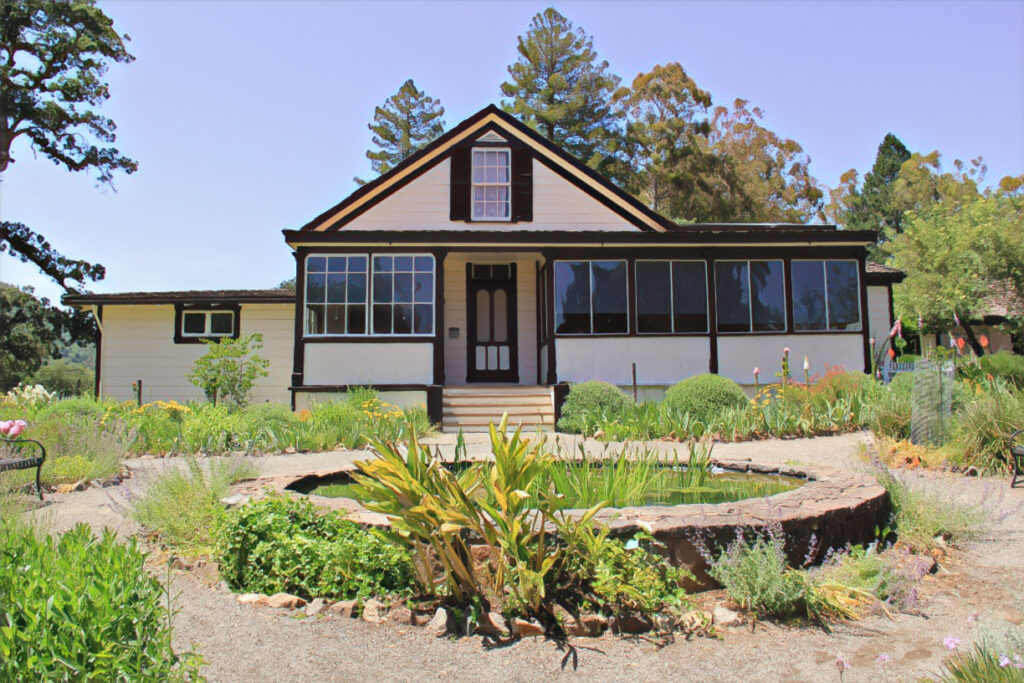
Jack London’s Cottage
The only place on the property that London actually lived in during his lifetime, the cottage was built in the 1860s and was purchased by London in 1911 when he also bought the Kohler and Frohling Winery buildings. He built additions over time and eventually it amassed 3000 square feet of living space.
On a self-guided tour of the cottage, you’ll walk through a guest room and turn into a deep hallway before coming to London’s office. It’s filled with multiple desks for a variety of uses (ranch work versus story writing), a number of books and photographs, and a collection of items that give you a sense of what it was like for London to create, and write, and pass the day.
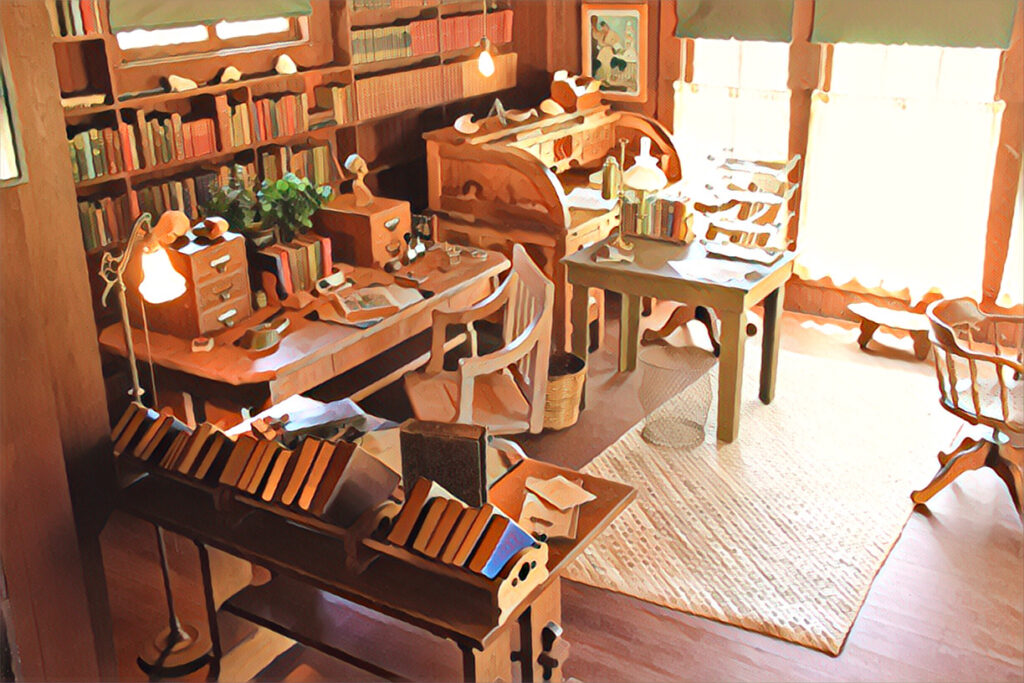
Adjacent to his office is a small sun porch where he’d often sleep. He would stay awake until the wee hours of the night and wake again around 5am to get back to it. His bed on the porch is incredibly small and humble. So opposite the literary giant who was Jack London.
Another favorite spot in the cottage at the end of the hall is the room of Charmian. The window seat was built for her by Jack after the burning of Wolf House. Most significant is her sun porch. Double the size of Jack’s, her porch was not only a serene place of refuge for her, it was the location of London’s death in 1916, his step-sister Eliza’s death in 1939, as well as Charmian’s own passing in 1955.

After you’ve toured the main cottage, walk next door to see the kitchen and living room quarters. Take a moment to walk around to the back of the cottage to see its gardens.
For more reading about the lives of the Londons try American Dreamers: Charmian and Jack London by Clarice Stasz.
Tip: there are a handful of picnic tables under the shaded canopy of large oak trees on the backside of the cottage–if you’ve packed a lunch, this is the best place to eat it.
The Cottage is open from 12pm-4pm.
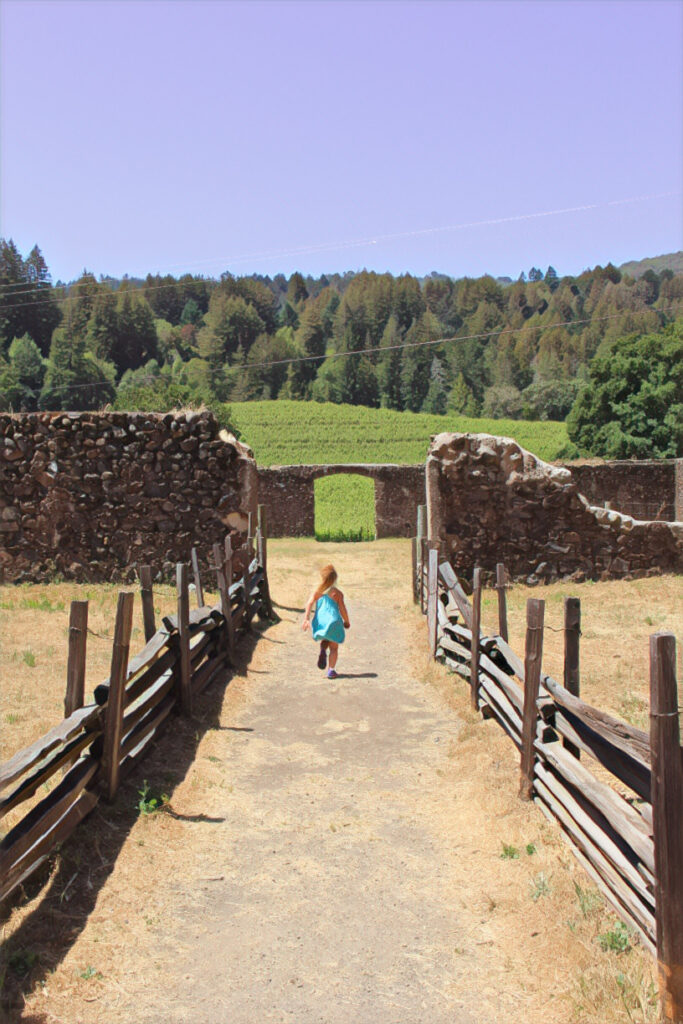
Vineyard Ruins
This large set of ruins sits below the sloped hill of the Londons’ cottage. The building sustained heavy damage because of the 1906 earthquake. Afterward, London used the foundation to build a wooden upper story which served as space with a number of rooms for guests and workers, and an office for his step-sister, Eliza, who oversaw the ranch.
On the bottom level, there was a long carriage space running up the middle (look for the information sign that shows a blueprint). Unfortunately, the building burned to the ground during a fire in 1965 so your imagination is required.

The Pig Palace
Walk through the Vineyard Ruins toward the grapevines and turn right on the path. Roughly a quarter mile down a new path diverts to the right up toward the Pig Palace. Built by London in 1915 at the cost of $3,000 (hence the name “palace”), the Pig Palace was an award winning design for a pig pen which could house over 200 piggies.
The two-story tower had storage on the upper-level that would drop down feed with the pull of a lever and doors on each side for easy maneuverability. The circular pen incorporated 17 separate little hog dens where the pigs had a roofed enclosure for sleeping, a fenced outdoor run, and a small open-air space for feed and water.
This was a favorite for my kids when we explored, as they enjoyed playing hide and seek within the pig pens. From the Pig Palace continue on the upper trail that works its way over to the silos and eventually back to the main path that will either take you back towards the cottage or up to the lake.

Hike to the Lake
Once you’re back on the main path, the lake is roughly three quarters of a mile from the Pig Palace. You’ll come to a point where you’re offered a more inland wooded path (that is not equestrian friendly). We took that route and really enjoyed hiking through the small redwood groves. Or you can stay on the wider path up the hill. The hike is relatively flat and we finished it easily with our two young children. Make sure to take water with you, especially on hot days.
Once you’re at the lake, it’s easy to imagine how lovely a place it must have been in London’s time for boating, swimming, parties, and Fourth of July barbecues. Not only that, the lake was functional. London created the stone dam at the headwaters of Kohler Creek in an effort to use the water for his farm. Beginning during the Depression and lasting through the end of the 20th century, the lake was open to day hikers and horseback riders offering swimming, fishing, and boating activities.
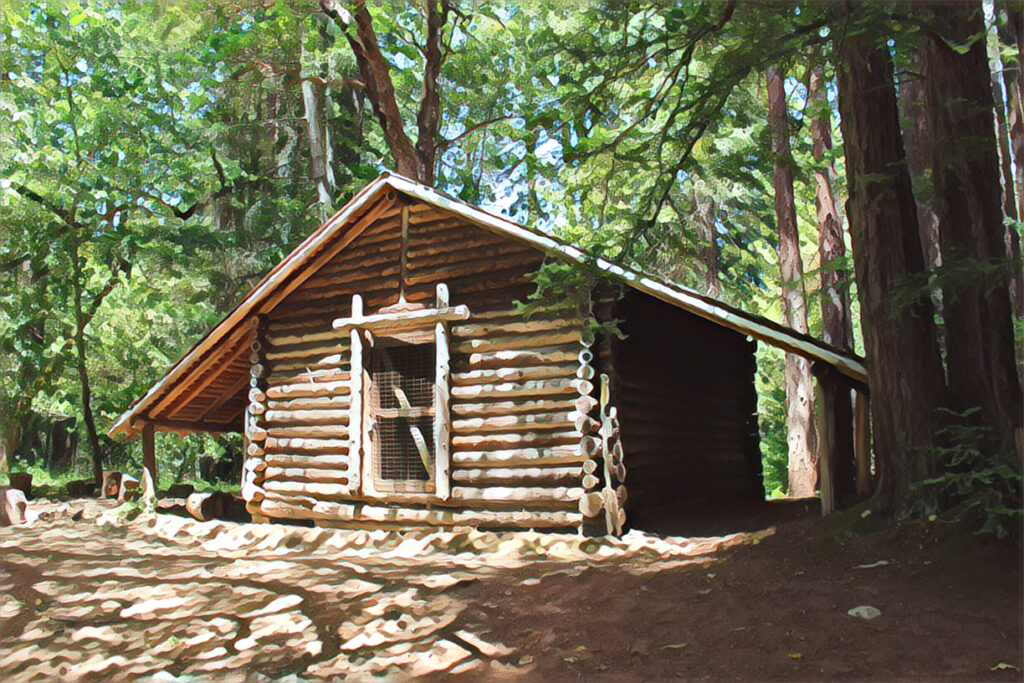
Mother Nature has taken her toll over time and today the lake appears as more of a swamp or wetland. The boathouse survives and the stone dam is still there. There are a few picnic tables available to rest or eat at. We enjoyed a number of horseback riders coming through (who let my kids pet the horses) and a flock of ducklings while we visited. If you have the time, it’s worth the trip.
KNOW BEFORE YOU GO
Jack London State Historic Park is located at 2400 London Ranch Road, Glen Ellen, CA 95442, roughly 50 miles north of San Francisco. The park is open from 9am-5pm; Museum 10am-5pm; Cottage 12pm-4pm. The park is closed on Christmas day. The entrance fee is $10 per vehicle (additional fees vary for large passenger vehicles) or free with a California State Parks Pass.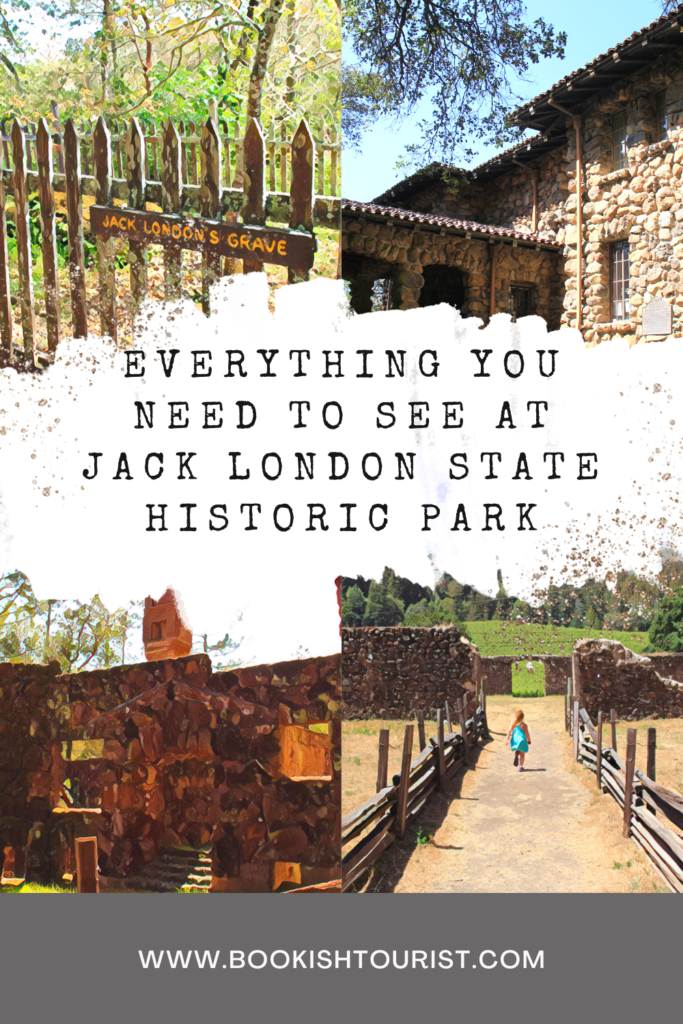
There are no restaurants or food sources on the premises but picnic lunches are accepted. Dogs on a leash are welcome in parts of the Beauty Ranch area and on the Wolf House Ruins trail but not on any other trail. Accessible flush toilets are available adjacent to the Museum parking lot. Credit cards are accepted at the small museum gift shop. Make sure to pack water, sunscreen and a sense of adventure!
Glen Ellen offers small smattering of amenities for those traversing the Sonoma wine region: a couple tasting rooms, a historic hotel and a few other lodgings, a saloon with a lovely patio that sits overlooking the confluence of the Sonoma and Calabazas Creeks, a lovely French Boulangerie serving delicious pastries and coffee, and the Glen Ellen Star (my recommendation).
For more Jack London adventures check out our complete Jack London West Coast Literary Trail. If you like Jack London and would like to know more about his life try Jack London: An American Life by Earle Labor.
Have you visited the Jack London State Historic Park? Let us know what you thought in the comments!






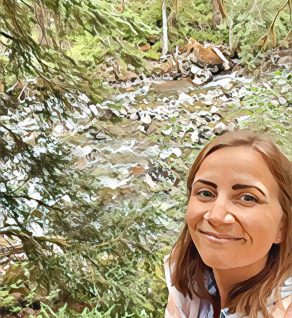

One Response